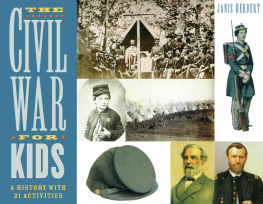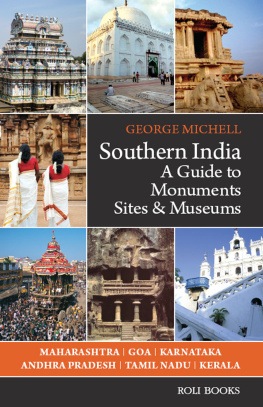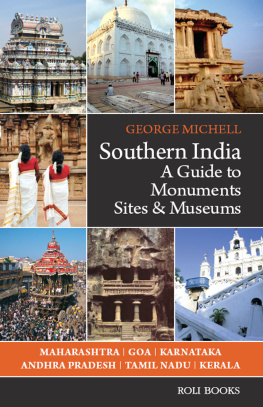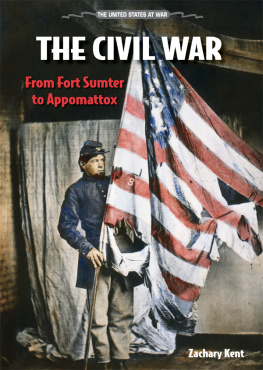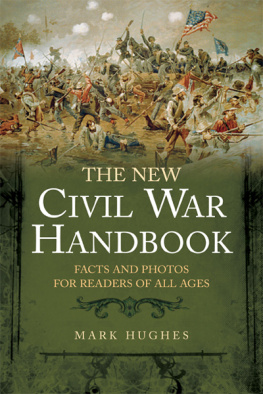The Big Book of
CIVIL WAR SITES
All of the information in this guidebook is subject to change. We recommend that you call ahead to obtain current information before traveling.
To buy books in quantity for corporate use or incentives, call (800) 9620973 or e-mail premiums@GlobePequot.com.
Copyright 2010 by Morris Book Publishing, LLC
ALL RIGHTS RESERVED. No part of this book may be reproduced or transmitted in any form by any means, electronic or mechanical, including photocopying and recording, or by any information storage and retrieval system, except as may be expressly permitted in writing from the publisher. Requests for permission should be addressed to Globe Pequot Press, Attn: Rights and Permissions Department, P.O. Box 480, Guilford, CT 06437.
Introduction by James C. Bradford
Edited by Cynthia Parzych
Text contributed by John McKay, Rebeccah Pawlowski, and Eric Ethier
Unless otherwise noted, all maps and photos are courtesy of the Library of Congress.
Text design by Elizabeth Kingsbury
Library of Congress Cataloging-in-Publication Data is available on file.
ISBN 978-0-7627-5467-0
Printed in China
10 9 8 7 6 5 4 3 2 1
How to Use This Book
Although there have been somewhere between 75,000 and 100,000 books published about the Civil War since 1865 (depending on which source you consult), the overwhelming majority have been on the Eastern Theater (Virginia, Pennsylvania, Maryland) and the grand campaigns and huge battles fought there that have become part of the American lexicon. However, the battles and campaigns that really brought the Confederacy to a close happened elsewhere, at Vicksburg in Mississippi, at Shiloh in Tennessee, at New Orleans and Port Hudson in Louisiana, at Wilmington and Durham Station in North Carolina, at Charleston in South Carolina, and, most important, at Atlanta and Savannah in Georgia. While Gettysburg, a name known literally around the world, has long been known as the battle of the war, it really was just a meeting engagement followed by a three-day battle of assault and maneuver, where the Union Army hung on by its fingernails most of the battle and only grievous error (some might argue a series of errors) of judgment by Lee handed the victory to the North. In comparison, the same day that Lees final charge up Cemetery Ridge broke the back of his own army, Pemberton in Vicksburg surrendered to Grant after a long, painful campaign that featured brilliant maneuvering on Grants part, superb gunnery by the Confederate cannoneers guarding the Mississippi River approaches to the city, heroic though unsuccessful assaults on the ramparts of the surrounding forts by Shermans men, six weeks of unbroken siege and heavy bombardment that resulted in the starving civilians of the city moving into caves and basements for cover, and, finally, an honorable surrender of an infantry garrison that had not been defeated in any direct assault on the city.
Similarly, although various Union armies maneuvered and fought all around the northern and eastern approaches to Richmond (their target from the very beginning) most of the four-year-long war, the city was finally taken only after Lees decimated Army of Northern Virginia was no longer able to resist the overwhelming Union armies opposing it. On the other hand, Atlanta was an even more important target from a military standpoint than Richmond itself, having manufacturing facilities to make the weapons and uniforms impossible to import through the Union naval blockade, warehouses to store all the supplies, and three major rail lines crossing in the middle of town able to take all those needed supplies to any point of the Confederacy. Richmonds major exports were ill-advised orders and advice from the politicians and hangers-on that plagued the city like so many vermin-infested mice. Atlanta fell after fewer than four months of a brilliant, determined, and well-led campaign by Sherman, and his subsequent sightseeing trip down to Savannah really and finally cut the Confederacy in half. The loss of both supplies and transport doomed the Confederacy, itself toppling less than six months afterwards.
The first part of every chapter discusses the history and chronology of the area, with as many anecdotal stories packed in as our editors would allow, and is followed by a listing section, where basic travel information is provided. This section is by no measure comprehensivewe really saw no need to tell you about the 16 fast-food establishments parked at the entrance gate of a national battlefield, for example; nor did we feel the need to review the amenities of standardized chain motels that clog the exit ramps of freeways these days like so many sutlers rows. We have attempted to let you know how to find these places in the rare instances it was not absolutely obvious upon arrival at a historic site. Some lodging and dining establishments were so overwhelmingly superior, however, that we felt as if we just had to bring them to your attention. We must point out that many of the areas we discuss are covered in thorough detail in other GPP publications, such as Insiders Guide to Atlanta, Insiders Guide to Savannah, and Insiders Guide to North Carolinas Outer Banks (available online and at major bookstores).
Some chapters also include day trips, mostly Civil Waroriented attractions that were not really a part of whatever we were discussing in the chapter, along with some unrelated features and attractions that the average history buff should enjoy.
The Civil War and the military have a specialized language that may trip up the uninitiated. Thus a glossary at the end of the book will help you understand terms and expressions that have no plain-language equivalent.
One last caveat: This work is the product of some very opinionated and somewhat biased historians (as if there were any other kinds!). As professional historians, we have tried to lay aside biases and opinions and take fresh looks at the events that unfolded here, but as interpreting history is an entirely subjective exercise, one cannot work in the vacuum of sober objectivity. The opinions presented here are our own and do not necessarily represent the views of Globe Pequot Press, the National Park Service, the Sons of Confederate Veterans, or any other interested parties.
Before You Go
As always, it pays to make a quick phone call to the facilities at your destination, before you start out on a lengthy road trip, to confirm hours of operation and other new developments. It also pays to be aware that you will likely be subject to a search before being allowed entry to any current military facility, so it would be advisable to leave weapons or anything that might be viewed with suspicion at home. Ask at the gate if photography or videotaping is allowed at your destination.
PRICE CODES
Accommodations: Based on information available at the time of publication, we offer the following price code (average one-night charge for double occupancy rates in peak season) as a general guide. Please note that fluctuations in price and availability occur frequently. Extra charges may apply for special weekends, additional people in the room, efficiency apartments, or pets. These prices do not include local or state taxes. Unless otherwise indicated, accommodations accept major credit cards.
| $ | $35 to $70 |
| $$ | $70 to $100 |
| $$$ | $100 to $130 |
| $$$$ | $130 and up |
Restaurants: The price code below is for a dinner entree (or lunch if dinner is not served) for one person. Appetizers, desserts, alcohol, and gratuity are additional.


